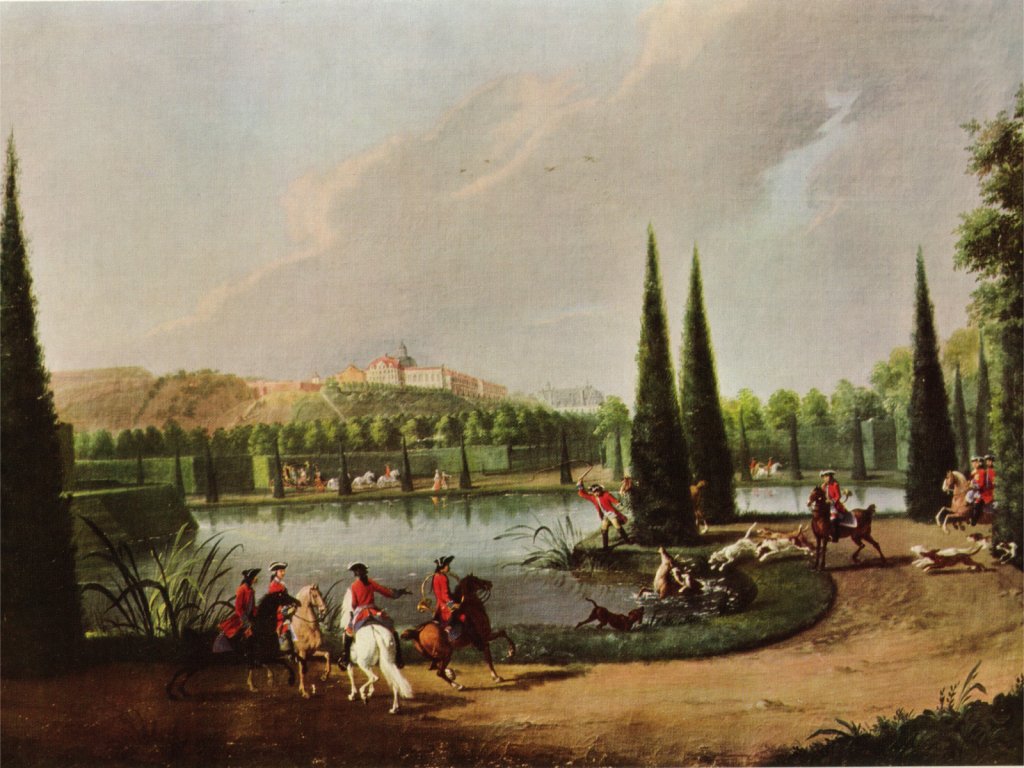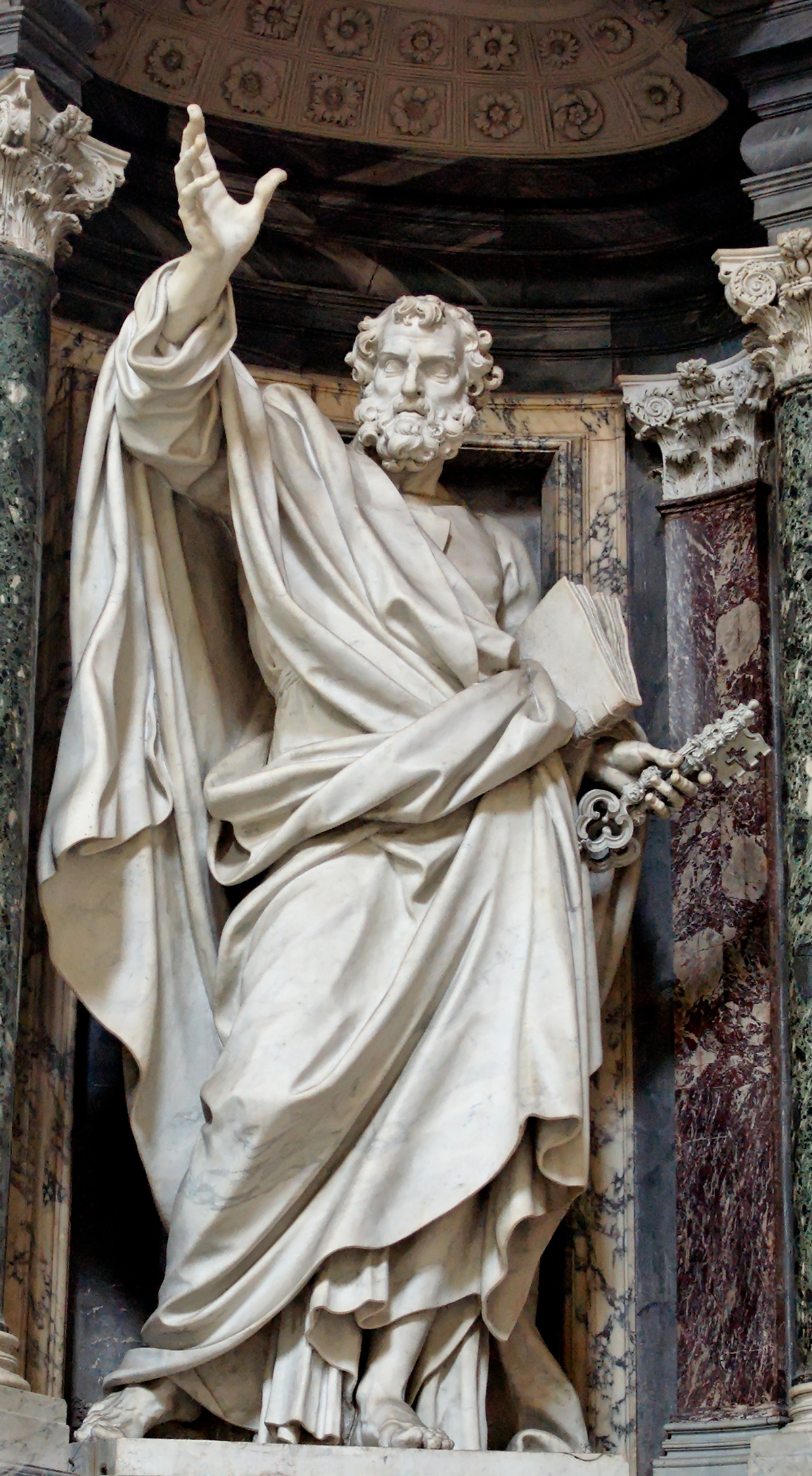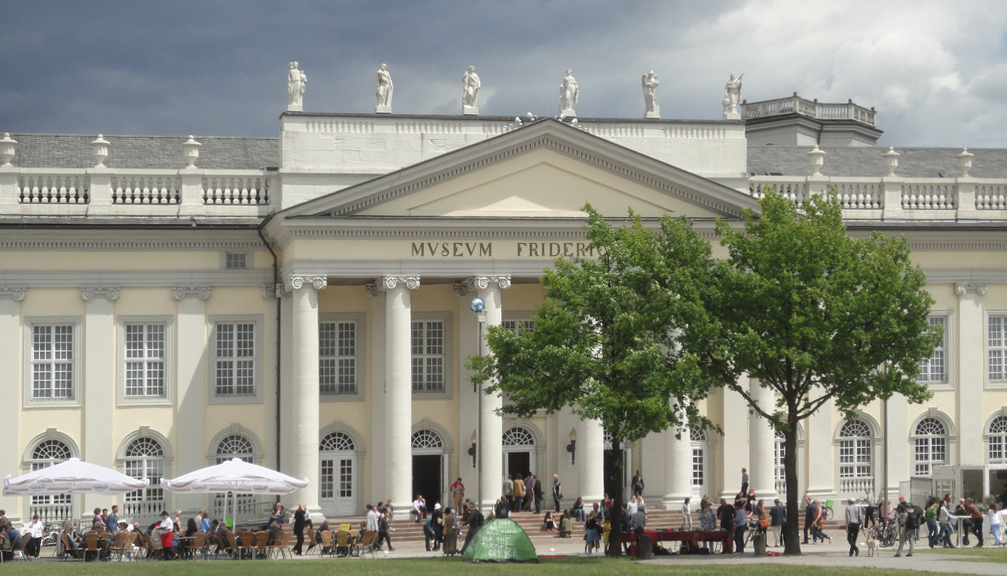|
Orangerie (Kassel)
The Orangerie is an orangery in Kassel, Hesse, Germany. It was built under Landgrave Charles between 1703 and 1711. Since then, it forms the northern corner of the Karlsaue park. Today it is used as an astronomy and physical cabinet. History The ground of the Orangerie was an old garden, in which Landgrave William IV built a small summer house. His successor, Landgrave Moritz redesigned the garden in the 17th century. The baroque castle of today was designed and built by the architect Johann Conrad Giesler in 1702, who worked on the court of the landgrave. The main building is 139.40 meters long. The marble bath (Marmorbad) was designed by Pierre-Étienne Monnot and is shown as a separate museum today. In World War II, the Orangerie was damaged and later repaired to host the federal garden show 1955. After the show the building was restored and transformed into the astronomy and physical cabinet with planetarium; in 1996 an astronomical garden was added. During the documenta ... [...More Info...] [...Related Items...] OR: [Wikipedia] [Google] [Baidu] |
Kassel Asv2022-02 Img07 Orangerie
Kassel (; in Germany, spelled Cassel until 1926) is a city on the Fulda River in northern Hesse, Germany. It is the administrative seat of the Regierungsbezirk Kassel and the district of the same name and had 201,048 inhabitants in December 2020. The former capital of the state of Hesse-Kassel has many palaces and parks, including the Bergpark Wilhelmshöhe, which is a UNESCO World Heritage Site. Kassel is also known for the ''documenta'' exhibitions of contemporary art. Kassel has a public university with 25,000 students (2018) and a multicultural population (39% of the citizens in 2017 had a migration background). History Kassel was first mentioned in 913 AD, as the place where two deeds were signed by King Conrad I. The place was called ''Chasella'' or ''Chassalla'' and was a fortification at a bridge crossing the Fulda river. There are several yet unproven assumptions of the name's origin. It could be derived from the ancient ''Castellum Cattorum'', a castle of the Cha ... [...More Info...] [...Related Items...] OR: [Wikipedia] [Google] [Baidu] |
Orangery
An orangery or orangerie was a room or a dedicated building on the grounds of fashionable residences of Northern Europe from the 17th to the 19th centuries where orange and other fruit trees were protected during the winter, as a very large form of greenhouse or conservatory. The orangery provided a luxurious extension of the normal range and season of woody plants, extending the protection which had long been afforded by the warmth offered from a masonry fruit wall. During the 17th century, fruits like orange, pomegranate, and bananas arrived in huge quantities to European ports. Since these plants were not adapted to the harsh European winters, orangeries were invented to protect and sustain them. The high cost of glass made orangeries a status symbol showing wealth and luxury. Gradually, due to technological advancements, orangeries became more of a classic architectural structure that enhanced the beauty of an estate garden, rather than a room used for wintering pla ... [...More Info...] [...Related Items...] OR: [Wikipedia] [Google] [Baidu] |
Kassel
Kassel (; in Germany, spelled Cassel until 1926) is a city on the Fulda River in northern Hesse, Germany. It is the administrative seat of the Regierungsbezirk Kassel and the district of the same name and had 201,048 inhabitants in December 2020. The former capital of the state of Hesse-Kassel has many palaces and parks, including the Bergpark Wilhelmshöhe, which is a UNESCO World Heritage Site. Kassel is also known for the '' documenta'' exhibitions of contemporary art. Kassel has a public university with 25,000 students (2018) and a multicultural population (39% of the citizens in 2017 had a migration background). History Kassel was first mentioned in 913 AD, as the place where two deeds were signed by King Conrad I. The place was called ''Chasella'' or ''Chassalla'' and was a fortification at a bridge crossing the Fulda river. There are several yet unproven assumptions of the name's origin. It could be derived from the ancient ''Castellum Cattorum'', a castle of the ... [...More Info...] [...Related Items...] OR: [Wikipedia] [Google] [Baidu] |
Charles I, Landgrave Of Hesse-Kassel
Charles of Hesse-Kassel (german: Karl von Hessen-Kassel; 3 August 1654 – 23 March 1730), of the House of Hesse, was the Landgrave of Hesse-Kassel from 1670 to 1730. Childhood Charles was the second son of William VI, Landgrave of Hesse-Kassel, and Hedwig Sophia of Brandenburg (1623–1683). Until 1675 his mother ruled as his guardian and regent before Charles was old enough to take over the administration for the next 5 years. His older brother, William VII, had died in 1670 shortly after reaching adulthood, even before he had had the chance to make any changes with the administration. Policies Under the reign of Charles, the consequences of the Thirty Years' War in the agricultural county could be overcome more quickly than they were in the more industrialized regions of the Holy Roman Empire. He pushed for the recreation of a large army and put it in the service of other countries in the War of Spanish Succession. His soldiers, he gave, as well as other princes of ... [...More Info...] [...Related Items...] OR: [Wikipedia] [Google] [Baidu] |
Karlsaue
The Karlsaue Park is a public and inner-city park of in Kassel (Northern Hesse, Germany). It was redesigned as a landscape garden in 1785 and consists of a mixture of visible Baroque garden elements and arranged “natural areas”. Location The Karlsaue is located on the western bank of the river Fulda southeast of the city centre of Kassel, near the central Friedrichsplatz. In the southwest the Karlsaue borders to sport facilities like the Auestadion and the ice skating rink. History The impressive historical park was created on an almost entirely flat terrain; it contains many man-made lakes, canals and fountains. The main palace Orangerie An orangery or orangerie was a room or a dedicated building on the grounds of fashionable residences of Northern Europe from the 17th to the 19th centuries where orange and other fruit trees were protected during the winter, as a very lar ... was built by Landgrave Charles between 1654 and 1730 as an “exotic winter garde ... [...More Info...] [...Related Items...] OR: [Wikipedia] [Google] [Baidu] |
William IV, Landgrave Of Hesse-Kassel
William IV of Hesse-Kassel (24 June 153225 August 1592), also called ''William the Wise'', was the first Landgrave of the Landgraviate of Hesse-Kassel (or Hesse-Cassel). He was the founder of the oldest line, which survives to this day. Life Landgrave William was born in Kassel, the eldest son of Landgrave Philip the Magnanimous and Christine of Saxony. After his father's death in 1567, the Landgraviate of Hesse was divided between the four sons out of the late Landgrave of Hesse's first marriage, and William received the portion around the capital Kassel, the Landgraviate of Hesse-Kassel. William took a leading part in safeguarding the Lutheran Reformation, and was indefatigable in his endeavours to unite the different sections of Protestantism against Catholicism. However, he was reluctant to use military force in this conflict. As an administrator he displayed rare energy, issuing numerous ordinances, appointing expert officials, and in particular ordering his slender financ ... [...More Info...] [...Related Items...] OR: [Wikipedia] [Google] [Baidu] |
Pierre-Étienne Monnot
Pierre-Étienne Monnot (9 August 1657 – 24 August 1733) was a French sculptor from the Franche-Comté who settled in Rome in 1687 for the rest of his life. He was a distinguished artist working in a late- Baroque idiom for international clients. In Italian sources he is often referred to as Pietro Stefano Monnot, an italianised version of his name. Biography Monnot was born at Orchamps-Vennes near Besançon in the Franche-Comté. Trained by his father, a woodcarver, he subsequently worked for Jean Dubois, a sculptor in Dijon, for a year. He then took on independent commissions for religious works in Besançon and Poligny. Monnot also visited Paris on at least two occasions, probably 1679–1681 and between 1684 and 1686, where he might have had contact with or worked under some of the leading sculptors working on the various enterprises of Louis XIV. Leaving Besançon in December 1686, he arrived in Rome in February 1687, where he was introduced to an established, tightly kni ... [...More Info...] [...Related Items...] OR: [Wikipedia] [Google] [Baidu] |
Documenta
''documenta'' is an exhibition of contemporary art which takes place every five years in Kassel, Germany. The ''documenta'' was founded by artist, teacher and curator Arnold Bode in 1955 as part of the Bundesgartenschau (Federal Horticultural Show) which took place in Kassel at that time. It was an attempt to bring Germany up to speed with modern art, both banishing and repressing the cultural darkness of Nazism. This first ''documenta'' featured many artists who are generally considered to have had a significant influence on modern art (such as Picasso and Kandinsky). The more recent editions of the event feature artists based across the world, but much of the art is site-specific. Every ''documenta'' is limited to 100 days of exhibition, which is why it is often referred to as the "museum of 100 days". ''Documenta'' is not a selling exhibition. Etymology of ''documenta'' The name of the exhibition is an invented word. The term is supposed to demonstrate the intention of ... [...More Info...] [...Related Items...] OR: [Wikipedia] [Google] [Baidu] |

_1572.jpg)



